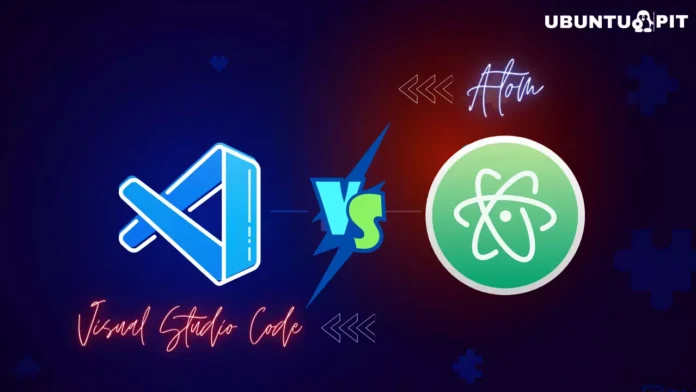Unix and Linux! These two mammoths of operating systems have overtaken every piece of technology, from the teeny-tiny embedded devices to everything. They are on your smartphone, smart TV, smartwatch, and even on the most powerful supercomputers in the world, with all of the top 500 running a Linux distribution.
But which OS had a greater influence on modern tech? How are they different from each other? And which one is more suited for your fancy needs? Well, in this article, we’ll answer all that and some more. We will cover everything about Unix vs Linux, from its history to its evolution. Let’s begin.
What is Unix?

Unix is a multiuser, multitasking operating system focused on enterprise usage. It is the bedrock beneath many operating systems you use today, like MacOS, Solaris, or POSIX. Unix was created in the 1970s by Ken Thompson, Dennis Ritchie, and the folks at Bell Laboratories (AT&T Laboratories). Also, it was one of the very first OSes to be written in C language.
Originally aimed at programmers, Unix found its way beyond AT&T, spreading to government and academic institutions and eventually becoming widely ported across different machine families. Even with all its success, Unix stayed a closed-off, proprietary operating system.
Now, Unix has a command-line interface (CLI). It lets you interact with your computer using various commands. You can do things like browse through your files, run apps, and literally everything else—all with just a few keystrokes.
Unix also has a graphical user interface (GUI). But you’ll still need to use CLI for various tasks that have no graphical tool or Windows interface like in a telnet session. It consists of the kernel, shell, and programs. The kernel maintains resources, while the shell serves as a user interface between the user and the kernel. And the programs are the apps and tools you use on it.
What is Linux?

Now, Linux is not just a single operating system. But a whole fleet of highly customizable and secure operating systems is built on top of the Linux Kernel. The kernel was released by Linus Torvalds on September 17, 1991. Torvalds developed the Linux Kernel from the ground up because of license issues and usage constraints with Unix and its many variants.
You may have heard that Linux is based on Unix. But that’s not true at all. Linux is a “Unix-like” OS. It’s a clone of Unix but not based on it. At first, it was built only for Intel x86 architecture. However, now it has been ported to nearly all the architecture in existence.
Also, it has the largest user base within general operating systems and is the top mobile operating system with Android. And despite having only a 4% desktop share, approximately 96.4% of servers are run on Linux. This popularity of Linux comes from its open-source nature and focus on home use, as opposed to Unix, which is largely aimed at enterprises.
Unix vs Linux: Differences

But that’s not the only difference between Unix and Linux. Let’s go over some key ones.
Cost:
- Unix comes with different pricing depending on the vendor. It’s generally not freely available.
- On the other hand, Linux is freely available and can be downloaded, installed, modified, and shared for free. Sure, some Linux OSes have paid versions, but the basic system is typically free.
Development:
- Unix systems have different versions developed primarily by AT&T and other commercial vendors.
- Alternatively, Linux is open-source, meaning thousands of contributors collaborate online to develop and improve it.
User Base:
- Unix is commonly found on internet servers, workstations, and rarely on PCs.
- In contrast, Linux is used by everyone, from home users to developers and power users. It can be installed on a wide range of devices, including mobile and tablet computers.
Interface:
- Unix was originally developed for the Bourne Shell but is compatible with various other software.
- Linux’s default shell is BASH (Bourne Again Shell), offering support for multiple command interpreters.
GUI:
- Commonly, Unix uses the Common Desktop Environment (CDE) and Gnome.
- On the flip side, Linux offers numerous GUI options, such as KDE, XFCE, Cinnamon, and Gnome, among many others.
Versions and File Types:
- Unix has versions such as HP-UX and BSD, supporting filesystems like ZFS and vxfs.
- Linux has way more variants than Unix. And you probably know a few popular ones like Debian, Ubuntu, Arch, OpenSuse, etc. Not to mention, they all support various filesystems, including the proprietary NTFS and ext.
Viruses and Threat Detection:
- As a Unix user, you may have to wait longer for bug fixes because of its proprietary nature.
- On the other side, Linux has seen only a small number of reported viruses, and threat detection tends to be speedy because of its community-driven rapid development.
Portability and Source Code:
- When pitted against Linux, Unix is much less portable. Plus, its source code isn’t open for everyone to see.
- On the other side, Linux is portable and can be booted right off a USB stick. Additionally, its source code is available to the public
Architecture:
- You can only run Unix on architectures like PA-RISC and Itanium machines.
- But Linux is available for numerous hardware processors, including Intel’s x86, ARM, and many many more.
Best Features:
- In Unix, you’ll find standout features such as the ZFS filesystem and dynamic Kernel Tracing.
- And there’s no end of features when it comes to Linux. It has fantastic features like kernel updating without rebooting.
Kernel:
- The Unix kernel is quite flexible. It can be a monolithic kernel, a microkernel, or a hybrid one. For example, macOS has a hybrid kernel, Solaris has a monolithic kernel, and AIX has a monolithic kernel with dynamically loadable modules. It also often includes streams I/O subsystem, which is preferred for writing device drivers and terminal drivers.
- Unlike Unix, Linux Kernel follows a monolithic kernel approach. But it doesn’t include the streams I/O subsystem.
Performance:
- Unix is best for high uptime and consistent performance in large-scale, mission-critical systems.
- On the flip side, Linux offers various power profiles based on distribution and configuration. You can also tweak your Linux system to get more out of it.
How Unix Has Evolved Over Time

Like most other OSes, Unix has evolved with time since its birth at the Bell Laboratory in the 1970s. Many variants of Unix started to pop up as it grew in popularity. By the late 1970s, various organization, including universities, research institutions, and computer businesses, all had their own separate versions of Unix. This resulted in an abundance of different Unix systems.
However, during the 1980s, there were some strong debates about UNIX’s benefits and drawbacks. Also, some efforts were taken to standardize its various variants. X/Open, later known as The Open Group, was crucial for creating open systems based on UNIX. The UNIX wars in the late 1980s and early 1990s were all about different groups fighting to become the top dog. But eventually, they came together to bring all the UNIX systems together.
Also, in the mid-1990s, X/Open introduced the UNIX 95 brand, guaranteeing compliance with the Single UNIX Specification. The specification’s separation from specific code streams facilitated standardization and broadened Unix’s adoption. Later versions of the specification, along with the UNIX 98 family of brands, further solidified UNIX’s position in the market.
Today, UNIX is still an essential part of open systems, with ongoing development and growth spearheaded by organizations such as The Open Group. Its modularity and interoperability principles continue to have an impact on current computing, with the open-source movement pushing the UNIX philosophy even further.
How Linux Has Evolved Over Time

Linux has also changed its shape and colors over the years since its birth in 1991. Inspired by Minix, Linus Torvald created the Linux Kernel. It began its journey as a free command-line-based OS.
But, over time, thanks to an active community of users, developers, and contributors, it grew and became popular. And by the late 1990s and early 2000s, Linux started becoming popular with the business-folks, as it was more flexible, cost-effective, and more secure than Windows. Not to mention, this led to the rise of commercial support services.
At this time, various distributions, which are still popular and in active development today, came out—distributions such as Debian, openSUSE, Ubuntu, etc. Nowadays, Linux is everywhere. But most people got to know Linux through devices like smartphones and smart TVs.
Impact of Unix and Linux on the Tech Industry Today

Even though they are quite different, both Unix And Linux shaped today’s tech in their own way. Their influence spans from servers to embedded systems, powering critical infrastructure and innovations alike. Unix’s principles of simplicity and modularity laid the foundation for modern computing paradigms.
On the other hand, Linux’s community-driven development model and user-centric, user-friendly approach gave birth to innovation. Now, we have so many Linux distros for so many use cases and for nearly every architecture and everybody!
Security Considerations for Unix vs Linux Systems

In today’s digital world, security is important. And both Unix and Linux have their own ways of staying secure.
Now, Unix keeps things safe by keeping its code private and licensed. Because of this, it’s tough for hackers to find holes in the system. Plus, Unix OSes usually come with support from the people who make it, so you get updates and fixes fast. That’s why big industries like finance and healthcare trust Unix to keep their important data safe.
On the flip side, Linux stays secure by being open-source. That means anyone can look at its code and help make it more secure. When a security issue pops up, it’s usually patched up fast. Linux also gives you lots of tools to customize your security. But that means you need to stay on top of it to keep everything safe.
Unix vs. Linux: Advantages & Disadvantages
Now, both of these distros have some solid pros and deal-breaking cons. Let’s go over them.
Advantages of Unix
- You can use UNIX on lots of different computers, and programs made for UNIX should work on any of them pretty easily.
- Many programs can run at the same time on one machine, sharing its power.
- UNIX organizes files in a tree-like system and has lots of ways to handle these files.
- With UNIX, you get a powerful command interpreter that understands tons of commands and can run both UNIX and your own programs.
- You can connect programs together so that the output of one becomes the input of another, either from the command line or within a program you write in C.
- There are also extra functions you can use to add more features to the operating system.
Disadvantages of Unix
- The user interface isn’t very user-friendly or easy to remember.
- It’s not very customizable.
- If you’re comparing Linux and Unix, remember that Unix is made for slower computers, so it might not run as fast on your rig as you hope.
- You’ll have to be extra careful with the shell interface because one small typo could delete all your files.
- Versions of Unix on different machines might work slightly differently, which can be confusing.
- Another big difference between Unix and Linux is that Unix doesn’t guarantee quick responses to hardware interrupts, so it’s not great for real-time systems.
Advantages of Linux
- Linux is free and open-source. You don’t have to pay anyone to install it on your PC.
- It is safer than other systems.
- You can customize your Linux OS to suit your preferences.
- Linux respects your privacy and doesn’t collect much data.
- You can Install only what you need with Linux OSes.
- There are many types of Linux Distros to choose from.
Disadvantages of Linux
- Linux doesn’t have a standard version like Unix does.
- It doesn’t support all drivers well, which can cause your system not to work right.
- There are simply too many options when choosing a distro.
Best Use Cases for Unix vs Linux Systems

Now, let’s go over the best use cases for Unix Vs Linux Systems so you can figure out which one is for you.
Best Unix Use Cases:
- Servers: Unix, known for its reliability and security, serves as the backbone for servers hosting critical applications like Nginx and Apache.
- Workstations: Unix excels in scientific and engineering sections, powering workstations for tasks such as data analysis, software development, and CAD.
- Personal Computers: Although less prevalent than Windows or Linux, Unix on PCs offers robustness, catering to users looking for a powerful operating system.
Best Linux Use Cases:
- Servers: Linux dominates the server infrastructure, serving as the preferred OS for web, database, email, and file servers due to its stability and versatility.
- Multithreading Applications: Linux’s robust support for multithreading makes it ideal for applications requiring high concurrency and processing power.
- Server Management: Linux excels in directly managing hardware resources. It can efficiently control the CPU, memory, and storage for best performance.
Finally, Insights!
So, we have come to the end of the Unix vs Linux debate. From their humble beginning till today, these two OSes have been the shaping force helping our tech get better each day. So, you can’t really go wrong with them. However, make sure to choose the one that meets your needs. Remember, both Unix and Linux bring their own advantages and disadvantages.
So, if you want to crunch some numbers or looking for a solid OS for your workstation or your server, go with Unix. However, if you love customization, free and open-source software, and not into digging through manuals and wikis every single time you want to do something, just choose a Linux distro out of the thousands! You won’t regret it!


